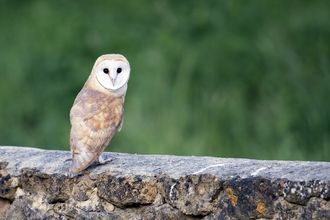Missing the barn owls?
Sadly, the barn owl pair have failed to return to the nest box this breeding season, and we will not be able to share our annual barn owl updates. Please do keep an eye on the webcam in case a new pair decide to take up residency.
In the meantime, we are delighted to invite keen webcam watchers to sign up for exclusive beaver updates from the Dorset Beaver Project. Learn about the changes happening on site, beaver adaptations, anatomy and behaviour, and more with regular emails straight into your inbox!
Sign up for exclusive beaver updates
Welcome to the Dorset Wildlife Trust barn owl webcam
This is a live and unedited stream of a barn owl webcam located at the Lorton Meadows nature reserve. Occasionally you might see disturbing images of the natural world. Our policy is to allow nature to play out without disruption or interference. If you have a problem viewing the stream, please try refreshing your screen.
Latest barn owl updates
Unfortunately our nest box has remained empty this year as our resident pair of the last five years have not returned, Barn owls can live for up to ten years, but their lifespan can be as short as five. This often depends on food availability, especially if the vole population they rely on crashes for some reason. Although voles are the mainstay of their diet, animals must be adaptable and will search further afield if a food source dries up. Barn owls also prey on other rodents, small birds, insects, and frogs, which are themselves breeding at this time of year and relatively easy to catch.
We're hopeful that we will see birds returning soon to the nest box. If you'd like to learn more about barn owls, book a place on our Owls and Owl Pellets event at Lorton Meadows.
What can you see on the webcam?
Code of conduct: This feed is for members of Facebook to leave observations and have discussions about this webcam. Please do not use any bad language, fully capitalise posts, or share offensive or controversial materials. Please be polite and respectful of others and remember that children may view these comments. Unfortunately, we can't reply to every post.
To see the latest comments click on "sort by" below and choose "newest".




